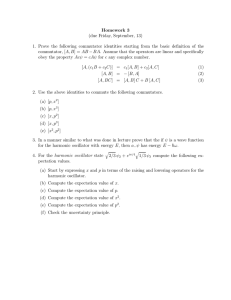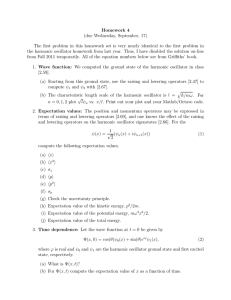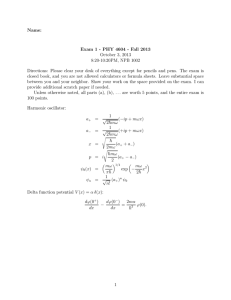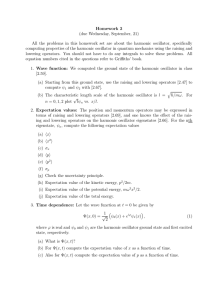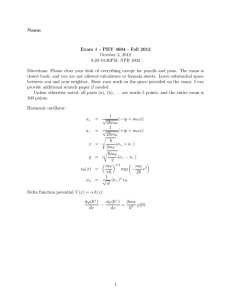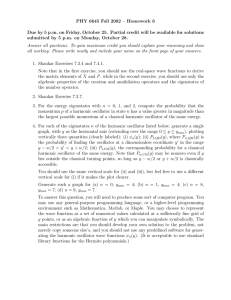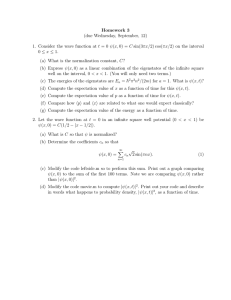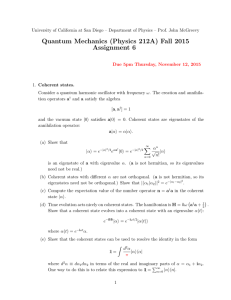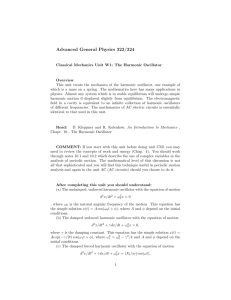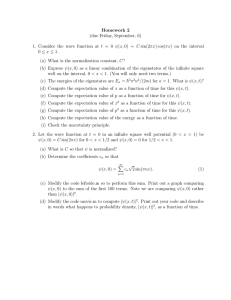Homework 4 (due Friday, September, 20)
advertisement
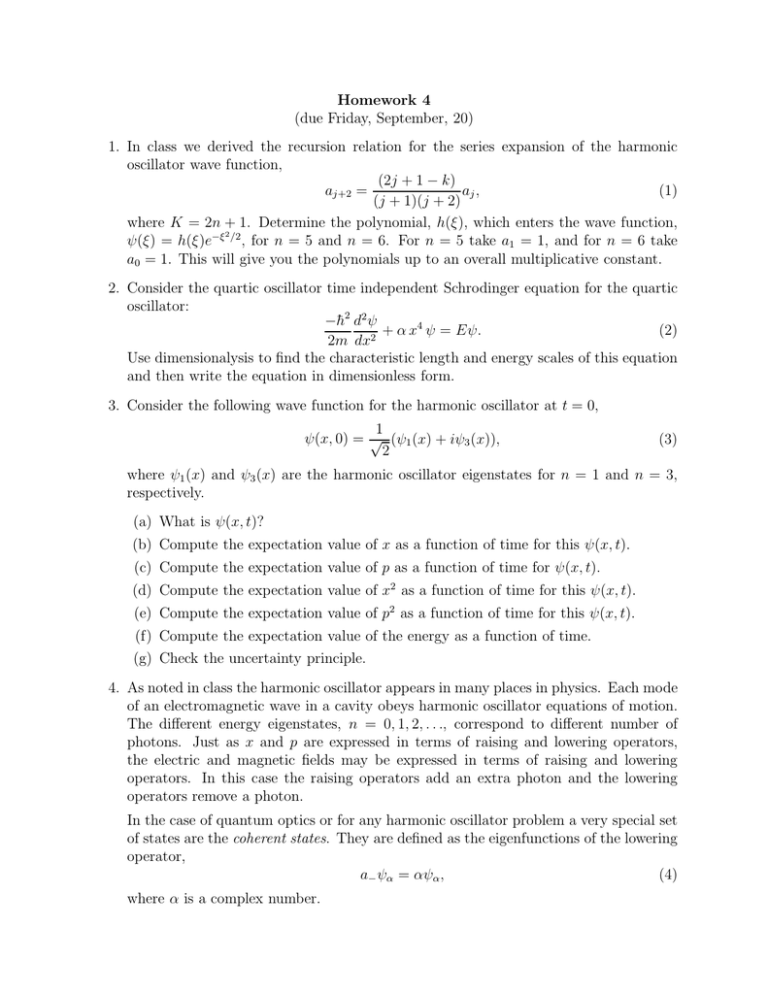
Homework 4 (due Friday, September, 20) 1. In class we derived the recursion relation for the series expansion of the harmonic oscillator wave function, (2j + 1 − k) aj+2 = aj , (1) (j + 1)(j + 2) where K = 2n + 1. Determine the polynomial, h(ξ), which enters the wave function, 2 ψ(ξ) = h(ξ)e−ξ /2 , for n = 5 and n = 6. For n = 5 take a1 = 1, and for n = 6 take a0 = 1. This will give you the polynomials up to an overall multiplicative constant. 2. Consider the quartic oscillator time independent Schrodinger equation for the quartic oscillator: −h̄2 d2 ψ + α x4 ψ = Eψ. (2) 2m dx2 Use dimensionalysis to find the characteristic length and energy scales of this equation and then write the equation in dimensionless form. 3. Consider the following wave function for the harmonic oscillator at t = 0, 1 ψ(x, 0) = √ (ψ1 (x) + iψ3 (x)), 2 (3) where ψ1 (x) and ψ3 (x) are the harmonic oscillator eigenstates for n = 1 and n = 3, respectively. (a) What is ψ(x, t)? (b) Compute the expectation value of x as a function of time for this ψ(x, t). (c) Compute the expectation value of p as a function of time for ψ(x, t). (d) Compute the expectation value of x2 as a function of time for this ψ(x, t). (e) Compute the expectation value of p2 as a function of time for this ψ(x, t). (f) Compute the expectation value of the energy as a function of time. (g) Check the uncertainty principle. 4. As noted in class the harmonic oscillator appears in many places in physics. Each mode of an electromagnetic wave in a cavity obeys harmonic oscillator equations of motion. The different energy eigenstates, n = 0, 1, 2, . . ., correspond to different number of photons. Just as x and p are expressed in terms of raising and lowering operators, the electric and magnetic fields may be expressed in terms of raising and lowering operators. In this case the raising operators add an extra photon and the lowering operators remove a photon. In the case of quantum optics or for any harmonic oscillator problem a very special set of states are the coherent states. They are defined as the eigenfunctions of the lowering operator, a− ψα = αψα , (4) where α is a complex number. (a) In class and in your last homework assignment we showed that for any functions f (x) and g(x): Z Z f (x)(a− g(x))dx = ∗ f ∗ (x)(a+ g(x))dx = Z Z (a+ f (x))∗ g(x)dx (5) (a− f (x))∗ g(x)dx. (6) Use these identities to compute the expectation values of x, p, x2 , and p2 for a coherent state. (b) Show that coherent states are minimum uncertainty wave packets. (c) By acting on a general harmonic oscillator state, ∞ X cn ψn , (7) n=0 √ √ with a− , show that for a coherent state cn = α cn−1 / n and hence cn = αn c0 / n!. (d) Use the results of the previous part to show that if at t = 0 we are in a coherent state with eigenvalue α, then at time t we are in a coherent state with eigenvalue α e−iωt . (e) Given that α → α e−iωt under time evolution, how do the expectation values of x and p change with time? Does your result make sense when you think of the problem classically? This problem has shown that coherent states are minimum uncertainty wave functions whose expectation values obey the classical equations of motion. They are the closest analog in a quantum system to the classical solution of the harmonic oscillator.
